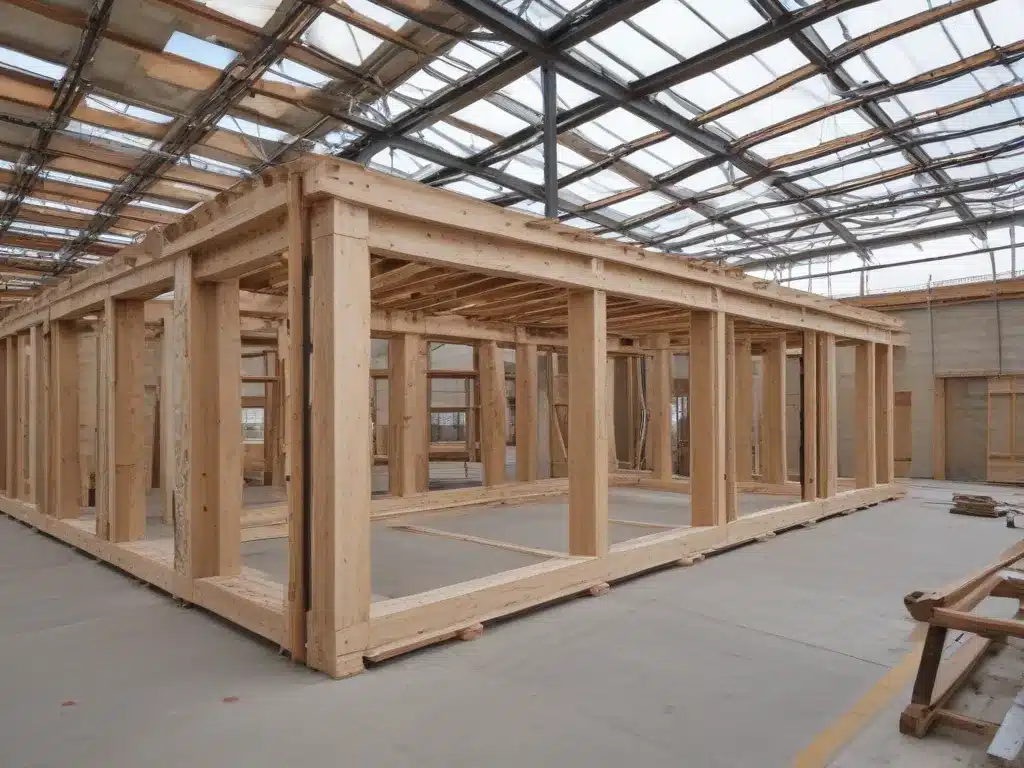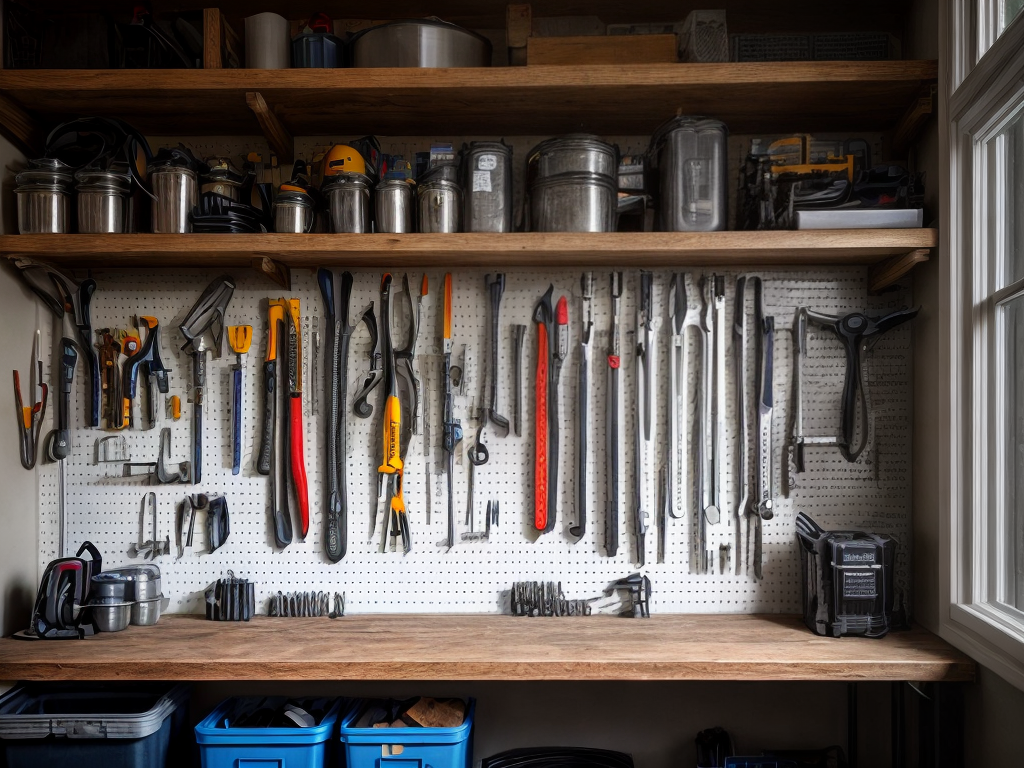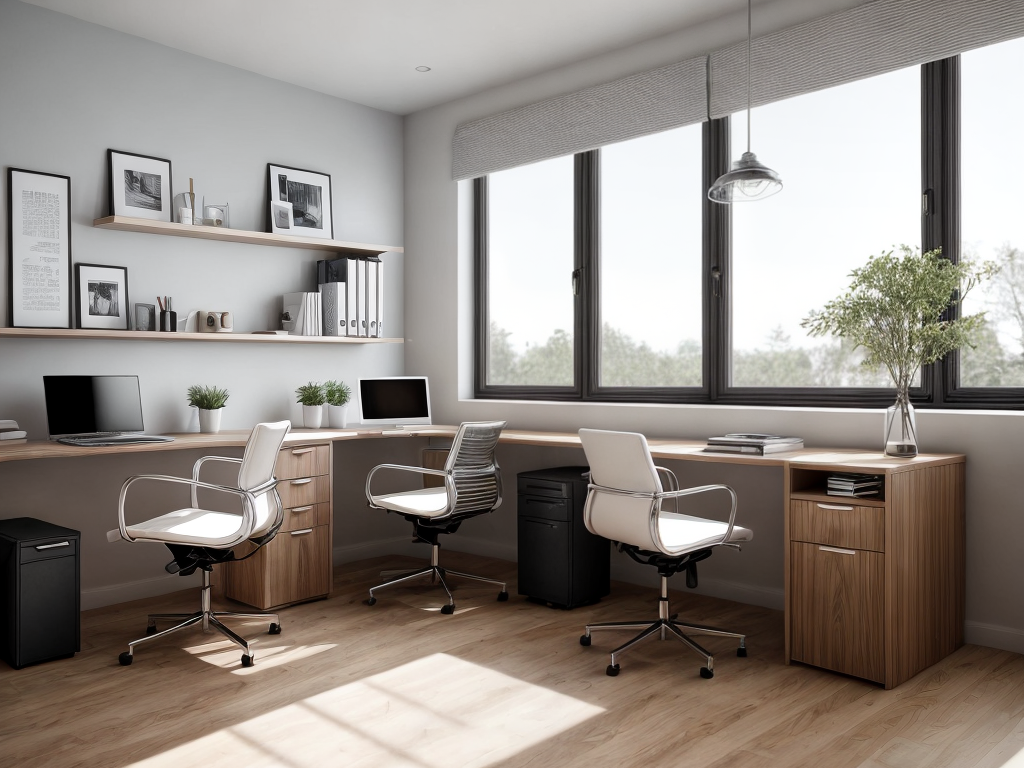
An Intro to Offsite Construction (With a History Lesson Thrown In)
Offsite construction – it’s the hot new trend sweeping the building industry, right? Well, not exactly. The core concept behind prefabricating components away from the jobsite is actually an ancient one, dating back thousands of years. But you wouldn’t know it from all the buzz and hype around modular building nowadays.
Let me hit you with a little historical perspective: the ancient Egyptians were prefabbing like champs when they built the pyramids. How else could they have constructed those massive stone structures with such incredible precision? They had to have prefabbed and pre-cut the gigantic blocks off-site before hauling them to the pyramid location.
Fast forward a few millennia, and we see the same basic principle at play during the 19th century’s Industrial Revolution. Factories started prefabricating iron components for bridges, buildings, and ships, assembling them on-site for crazy-fast construction. Sounds a lot like modern modular building, doesn’t it?
But of course, with each new era came innovative twists on the ancient offsite concept. These days, we’ve got state-of-the-art facilities churning out entire rooms, floors, or even whole buildings in a controlled factory setting. The panelized systems, structural insulated components, and volumetric modular units rolling off the line are like something from a futuristic sci-fi movie.
So yeah, while the core idea is ancient, the technological execution and mind-blowing scale of today’s offsite construction is pushing boundaries like never before. It’s modern efficiency meets tried-and-true methodology – the best of both worlds, really.
Why Savvy Contractors Are Embracing Prefab
As a contractor in the thick of this offsite revolution, I’ve got to say – the benefits of prefab methods are just too good to ignore these days. Cost savings, time savings, improved safety, higher quality – it’s a quadruple whammy that’s making traditional stick-built construction look outdated.
Let’s break it down:
1. Cost Savings
There’s no nice way to put it – construction is expensive AF. Material costs, labor costs, project delays, material waste – it all adds up fast for on-site building. But with offsite prefab, we can cut sooo many of those expenses.
First up, those factory controlled settings are just inherently more efficient. Consistent conditions, streamlined processes, minimal material waste – it’s a lean, mean construction machine compared to chaotic jobsites. That translates to major cost savings right off the bat.
But it gets better! Since prefab components are built in a factory, we can source materials and labor on a longer-term, bulk-buy basis. Hello, bulk discounts! We’re talking 20-30% savings on stuff like concrete, steel, and other core materials.
On the labor side, those factory staff can work at a sustained, efficient rate in the controlled conditions. No weather delays, material deliver hiccups, or other jobsite clusterf*cks to slow them down. Faster throughput = less hourly labor costs.
2. Time Savings
They say “time is money” in this biz, and prefab helps us save a ton of both. Traditional construction has so many variables that can delay stuff – suppliers running behind, weather shutdowns, site access issues, trade conflicts…I could go on forever. With offsite methods, we can bypass most of those delay risks.
While the factory is cranking away on the components, site prep can happen concurrently. No waiting around for foundations/framing/etc. to finish before other trades can start. Boom – streamlined parallel activities cutting overall timeline by 30-50%!
Having prefabbed components ready to simply install is a game-changer too. We can have a full floor’s worth of walls, plumbing, wiring, etc. – all pre-built and ready to lift into place with a crane. Immediate “dried-in” condition means trades like drywallers and finishers can start sooner. No more wasted weeks waiting on one trade to fully complete before the next can go.
3. Improved Safety
Jobsites are inherently hazardous environments – aws , heavy components, dense activity, complex choreography…there’s just so much pooci for things to go sideways. But you know where’s WAY safer? A controlled factory floor!
Those offsite prefab facilities are climate controlled, with consistent lighting, ergonomic stations, guarding/sensors for machinery, strict safety protocols, and way fewer working at heights or around active equipment. It’s a way chiller, more comfortable setup for workers to operate in.
Since we’re building stuff in sections at the factory, there’s also way less need for habaz trades like steelworkers, framers, roofers, etc. to pie up high actively assembling components. Those high-risk scopes can happen at sane heights in the prefab plant, THEN the finished pieces just go vertical at site with cranes and minimal elevated work.
But safety’s not just about reducing injuries – it’s about saving money too. Cuz every construction injury = downtime, compensation claims, retraining, regulatory fines, and workforce disruption. With prefab’s safety advantages, we can avoid so many of those costly headaches.
4. Higher Quality
Producing building components in a factory just breeds waaay higher quality than jobsite construction. The controlled conditions, specialized equipment, rigorous QA/QC processes, and skilled labor pool make it almost impossible NOT to get top-notch quality.
No more showing up to jobsites with materials getting prematurely weathered and degraded. No more DIY workarounds and macgyvering to overcome site constraints. No more shady tradesmen cutting corners and making mistakes thanks to inadequate oversight.
Everything gets built with precision under microscopes (sometimes literally) adhering to strict tolerances, before getting wrapped up and protected for transportation to site. What we install is essentially a finished, defect-free product made with meticulous care.
Sure, there’s still some on-site work to integrate components. But even so, subs can focus solely on those final connections and touches without stressing over framing, roughs, and all the other heavy-lifting already completed in the prefab plant.
At the end of the day, it results in waaaay tighter build quality across the board. Less issues and callbacks down the road mean happier clients and better protected profitability for us!
Overcoming Prefab’s Perceived Downsides
Despite being an ancient concept updated for modern times, offsite construction still gets some side-eye from old-schoolers resisting change. Price concerns, aesthetic assumptions, and geographic limitations are common hurdles. But I’m here to shatter those misguided myths!
The Affordability Myth
“But Ted, I’ve heard prefab construction is more expensive! How can it be cost-effective?”
Ohhh man, this is probably the biggest prefab misconception out there. And I can see why – when you look at something like a high-end modular home with all the fancy amenities, yeah that price tag might make you do a double-take.
But here’s the crucial bit most people miss: for commercial prefab construction on stuff like hotels, apartments, office buildings, schools etc., we can actually save a boatload of cash versus traditional on-site methods.
Those bulk material deals, sustained labor efficiencies, less wastage and rework? All direct cost savings for contractors like us that get passed through to developers and owners on the pricing. Not to mention longer-term reductions from faster construction schedules, higher quality reducing callbacks/premature replacements, and so on.
The up-front price might seem higher at first glance. But once you factor in allllll those cost-avoidances over the entire building lifecycle, it blows traditional methods out of the water in value and ROI. Like, it’s not even close!
The Aesthetic Objection
Another common gripe I hear is about aesthetics. Usually goes something like: “Prefab looks too modular and monotonous – I want something unique and customized!”
And I get it, I truly do. If all you’ve seen are basic cookie-cutter modular homes or soulless temp buildings, I can see why you’d make that assumption about aesthetics. But modern offsite methods have come a looooong way in blending customization with that core efficiency.
Advanced BIM software lets us model out some crazy complex, visually-stunning designs and forms made up of prefab components. Exterior façades, rooflines, even structural elements – it can all be customized and combined in unique ways way beyond basic boxes or repetitive units.
Heck, I’ve seen prefab schemes with origami-inspired geometries, seamless curves, cantilevers… simply gorgeous, distinctive buildings you’d never peg as “prefab” in a million years. There’s still so much room for architectural expression despite the prefabricated nature.
On the interior too, we can easily customize endlessly with different materials, layouts, built-ins, you name it. Within each prefab “module” is essentially a blank canvas to design to the client’s tastes and branding requirements. Unique finishes, pops of color, custom millwork – it’s all on the table without sacrificing the prefab core.
So in summary: no, modern offsite construction ain’t your daddy’s shipping container house or PEMB storage unit. We’re crafting full-blown avant-garde architectural masterpieces with this stuff!
The Geographic Barrier
“But I’m in a remote area far from major prefab facilities. Doesn’t that make offsite construction impractical due to transportation costs and logistical challenges?”
Valid point – IF we were still living in the 1800s with limited transportation infrastructure. But this is 2023, baby! Shipping stuff long distances is easier (and greener) than ever.
While it’s ideal to have a prefab plant relatively close for shorter transit times and costs, it’s become waaaay less of a geographic limitation than it once was. Modular units get stacked efficiently on trucks and barges to make the most of hauling capacities. Specialized logistics companies ensure careful handling and delivery sequencing.
And let’s not forget those overall schedule accelerations with prefab – even if you’re remote, you still benefit from faster enclosed conditions to start interior work sooner. So it can easily offset a portion of those shipping expenses with earlier interim milestones and cash flows.
I’ve worked on successful offsite jobs even in extremely remote regions – getting components delivered via roadways, waterways, you name it. These days, where there’s a will (and a skidded truck trail or dredged canal), there’s absolutely a way to make prefab work!
My Key Takeaways
As you can probably tell by now, I’m an unapologetic advocate for offsite construction’s incredible benefits, both modern and rooted in ancient principles. Cost-efficiency, time thrift, safety, impeccable quality – the advantages are just too overpowering to ignore.
But more than that, I truly believe prefab is the future of our industry. An inevitable paradigm shift, if you will. Don’t buy it? Just look at the massive investments going into ramping up offsite capabilities by product manufacturers, contractors like us, and even companies outside construction.
We’re talking billions upon billions in automated factories, robotic tech, digital integrations, and R&D toward ever-advancing prefabrication. The train is full-steam ahead, folks. So we might as well hop aboard before we get left behind!
Will prefab completely replace traditional on-site methods? Of course not – that’d be an overreaction. There will always be retrofit, renovation, and unique architectural jobs where stick-building still makes sense. But for a huge proportion of commercial and resi construction, I’m confident offsite prefab will become the default, standard approach in the decades ahead.
After all, its core concept is ancient human ingenuity carried forward through modern technological prowess. Why wouldn’t we capitalize on that beautiful marriage of deep roots and vast potential? Seems like a no-brainer to me.
So if you’re a contractor, developer, owner, or just a curious industry watcher, I’d encourage you to look past any lingering misconceptions or hesitations. Dive into the rapidly evolving offsite universe – I guarantee you’ll be awed by what you find.
The future is modular, prefabbed, and being built in a factory near you. Come Atchison Construction Inc and let’s shape what’s next together!





